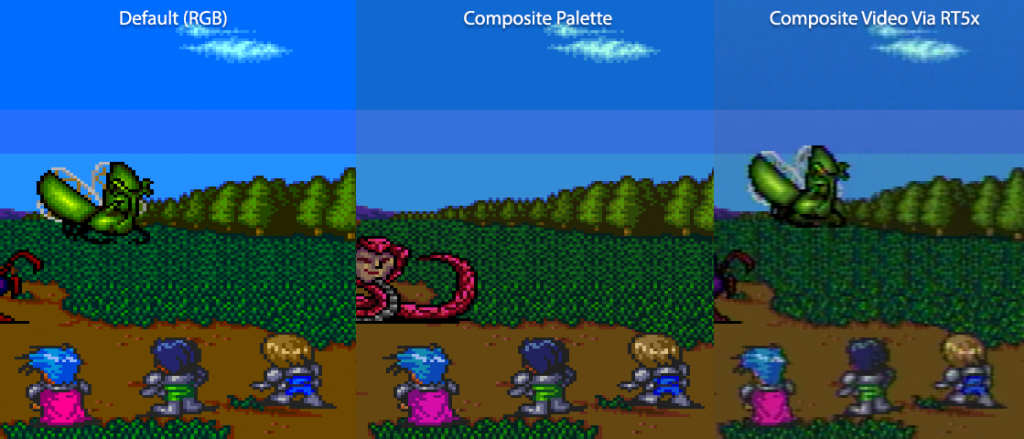I just tested the Super HD System3 PRO: An HDMI-outputting version of Terraonion’s Super SD System 3 ODE/AV adapter that also includes built-in support for the SuperGrafx. I wanted to check out it’s features and performance, but didn’t have time to do a high-production video. Instead, I decided to livestream what my normal testing process would have been, both to provide a conclusion, as well as give people an insight into what it’s like to be a reviewer. I recommend most people skip the video and just read the post below, but the full livestream is there for any of my nerd friends who are curious 🙂
Purchase yours here: https://retrorgb.link/ssds3pro
Compatible RGB Cables (Genesis 2): https://www.retrorgb.com/genesisrgbcables.html
Thanks to Tianfeng and Artemio for joining the stream and helping test!!
Tian: https://twitter.com/Tian_Feng44
Artemio: https://www.patreon.com/aurbina
I’ll definitely start by politely pointing out this is a summary, not my usual in-depth look. I believe My Life In Gaming will have a video on this soon and you an always check the stream above as “proof” of what I’m about to say – Just please note that we spent a good amount of time scrutinizing all the little details. If you watch the stream and are unfamiliar with test procedures, you might get the impression we didn’t like it, or found “problems”; That is not at ALL the case! We liked the product, but I take my role as a reviewer seriously and spent a lot of time double and triple checking things. So, if the stream is boring, don’t say I didn’t warn you 🙂 Here’s my thoughts:
- RGB output looked awesome. This is because video is generated from the TG-16/PCE’s digital signal pins, so even if you have a console with bad jailbars visible from good plug & play solutions like the Spark Plug or Grafx Booster, they will not be visible via the Super HD System3 PRO’s RGB output.
- HDMI output was very clean and there’s choices for 480p, 640×480 (VGA CRT monitors) and 720p. All PCE resolutions seemed close to the proper aspect ratio and it overall looked good. There’s some room for improvement, but as a plug and play device, I was impressed.
- The updated menu was really nice and I definitely preferred it over the original.
- Overall, the ODE and ROM Cart functions worked just as well as the original SSDS3.
- Audio testing via MDFourier showed very good quality from the CD emulation from both the HDMI and analog outputs. While there’s still room for tweaking, you can expect an experience extremely close to original hardware.
- Composite video is passed through from the console’s cvbs pins, so it’s the same as every other quality composite solution.
- You can’t use both the RGB and HDMI output at the same time. Whenever an HDMI cable is plugged in, the RGB output is disabled.
- HD Retrovision cables are supported, but you must enter the options menu and change analog brightness from “Normal” to “Medium”:

- Since the video signals are generated digitally, the Super HD System3 PRO is able to offer a menu option to “fix” the color palette, with an option to select which you’d like use for both the RGB and HDMI output. You have to create a folder on the card and load the palette (check the manual for details), but after you do, you can select which you’d like to use from either the Analog or Digital “Color Table” menus shown above and below.
This is worthy of a separate post altogether, but basically, the PCE/TG-16 generates color in a way that the composite output is correct and the RGB output isn’t. MiSTer offered a fix for this awhile back and this device offers it too. Check out the difference between the default (RGB) palette, the fixed composite palette and a capture from composite video – And especially note the sky gradient:


Overall, I thought it was great, but the product isn’t for everyone. First, if you currently own a previous SSDS3, don’t care about SuperGrafx games (or already own a SuperGrafx) and have a nice scaler like a RetroTINK 5x, the biggest feature this offers is the corrected color palette.
If you don’t own an ODE and want to use your original TG-16 or PCE console, this is a really good option. I’d like to point out that you’re still using “real hardware” with the Super HD System3 PRO: The entire console is still being used and the only thing emulated in the FPGA are the SuperGrafx and optical drive hardware.
…and speaking of FPGA, you can run a work-in-progress NES core on the FPGA. I have mixed feelings about core support: First, if you don’t have a modded NES or Famicom, this is going to be a much cleaner way of playing than via composite video (or even RF) from the originals. It might be cool to use this for NES roms and save your original NES console for carts. That said, I personally wouldn’t buy this just for core support. If that’s your goal, I’d just go right for a MiSTer.
Now, I don’t want that last comment to come across as “jst gt a Rpi” – I love using original hardware and there will always be a place for it. I just think it’s worth adding the perspective that if you don’t own any original PCE/TG-16 equipment and plan on buying something like a Core Grafx, controller, SD card and this device, you can spend the same amount and get a MiSTer with controller adapters and near-perfect hardware emulation for many cores. I personally use and love both for many different reasons, but the choice is up to you.
